Alabama folks struggling with phone bills might qualify for Lifeline – a program cutting $9.25 monthly from your bill.
Eligibility? You need to be at/below 135% of federal poverty guidelines ($18,347 for one person) or participate in programs like SNAP, Medicaid, or Federal Housing Assistance.
Application’s straightforward: gather proof of income or program participation, contact your provider or use the National Verifier system. [1]
Most providers participate – AT&T, T-Mobile, and smaller regional companies too.
Don’t pay full price if you don’t have to. The process takes about 30 minutes online.
Key Takeaways
- Understand income and program-based eligibility requirements clearly
- Follow simple steps to apply online, by mail, or with provider assistance
- Keep your benefits secure by staying compliant with recertification and documentation rules
Eligibility Criteria for Lifeline in Alabama
A. Income-Based Eligibility
1. Federal Poverty Guidelines
The government’s got this income cutoff thing – 135% of federal poverty level. If you make less than that, you’re probably in. For 2025, that breaks down to:
- One-person household: $21,128 or less annually
- Two-person household: $28,553 or less
- Each extra person? Add another $7,425
Fall under these numbers and you’re probably good to go. Nothing complicated about it, just a straight line in the sand. You’ll need proof though – most folks just grab whatever paperwork they’ve got lying around showing what they make.
2. Proof of Income
They’re gonna want to see some papers. Stuff like:
- Last year’s tax return (that 1040 form)
- A couple recent pay stubs
- Letters saying you get other help (food stamps, etc.)
Some companies let you verify online against government databases. Sometimes works great, sometimes it’s a pain in the neck. Might save you a trip to the office though.
B. Program-Based Eligibility
1. Federal Assistance Programs
The government’s backdoor entry point sits right in plain sight. Already collecting some form of federal aid? That’s your ticket in. If you receive:
- SNAP (food stamps)
- Medicaid [2]
- SSI (Supplemental Security Income)
- FPHA (Federal Public Housing Assistance)
- Veterans pension or survivors benefits
The red tape vanishes. Just produce that official letter showing your current benefits and you’re cleared. No need for the usual income calculations or paperwork gymnastics.
2. Tribal and Special Assistance
Tribal land residents face a different set of options. Those receiving Bureau of Indian Affairs assistance or Tribal TANF qualify automatically. The documentation requirements shift though – you’ll probably need to track down specific tribal benefit verification or get the BIA to confirm your status (sometimes a 45-60 day process).
Other situations make the cut too. Survivors of domestic violence receive particular considerations. Parents with children enrolled in WIC or school lunch programs might qualify, depending on certain factors that administrators don’t always explain clearly. Worth investigating if that describes your situation.
C. Verification & Documentation
1. Automatic Verification
The federal system uses the National Verifier to check your info against multiple databases. If your income and program participation are clear, you’re likely approved quickly. This saves a lot of paperwork and waiting.
2. Manual Verification
If the system can’t verify your info automatically, you’ll need to send proof documents. These should be official and recent, benefit letters, pay stubs, tax returns. Sometimes, a provider can help you gather these or walk you through what’s needed.
Application Process for Lifeline in Alabama

A. How to Apply
1. Online Application
Most people prefer the convenience of online. The National Verifier website is the main portal. Here you fill out basic info, and the system checks your eligibility automatically.
Providers like Assurance Wireless, AirTalk Wireless, or others also have portals linked to the same system, making it easier to apply directly through them.
2. By Mail
Some prefer paper forms, especially if they don’t trust online systems or don’t have internet access. You’ll need to fill out a physical application, attach copies of your proof documents, and mail everything to the appropriate address.
It takes longer but works for those who prefer paper.
3. Through Providers
Many Alabama providers offer assistance, either in-store or over the phone. They can help you fill out applications, gather documents, or explain what’s needed. Sometimes, applying through a provider means quicker approval or easier recertification.
B. Post-Application Steps
1. Approval & Notification
Once approved, you’ll receive a letter or email confirming your eligibility. This notice usually includes your benefit amount and instructions for activating your service. After that, your provider will activate your account, and you’ll be able to start using your phone or internet.
2. Recertification
Lifeline benefits aren’t forever. Every two years, you have to re-verify your eligibility. The federal government or your provider will send reminders, but it’s smart to keep your documents updated and ready.
Failing to recertify can lead to losing your benefits, so staying on top of this is key.
C. Troubleshooting & Support
1. Common Application Errors
Problems often happen when documents are missing, information doesn’t match, or forms aren’t filled out correctly. Sometimes, the system rejects an application because the proof is too old or incomplete.
2. Resolution
If that happens, contact the Lifeline Support Center or your provider. They can help clarify what’s wrong, guide you on resubmitting, or provide alternative proof options. Patience helps, as processing times vary.
Benefits and Service Details
A. Service Offerings
1. Discounted Phone & Internet
Lifeline provides a monthly discount on either a cell phone plan or broadband internet. The discounts usually cover a significant portion of the cost, making communication accessible.
Some plans include free monthly minutes or data, depending on the provider.
2. Provider Options
Major providers like Assurance Wireless, TruFone, AirTalk Wireless, and others participate in Alabama. Coverage differs by area, and device choices vary. It’s worth comparing plans to find what fits best.
B. Usage & Compliance
1. Maintaining Eligibility
Once approved, keep your documents current. If your income rises or you stop participating in programs, you must update your info.
Report changes quickly to avoid losing benefits.
2. Service Standards
Lifeline has minimum service standards, so providers must meet certain quality benchmarks. Coverage, call quality, and data speeds are expected to be consistent.
C. Additional Benefits & Considerations
1. Tribal & Rural Support
Special programs exist for those living on tribal lands or rural areas. These often require extra documentation but can provide better coverage or more discounts.
2. Protecting Your Benefits
Be honest on your application. False statements can lead to disqualification or legal issues. Recertification rules are strict, but federal protections exist to prevent unfair termination. Keep records and stay informed about your rights.
Practical Tips for Getting and Keeping Lifeline Benefits
- Always update your contact info and documents before recertification deadlines.
- Keep copies of everything you submit.
- If denied, ask why and what’s missing, often a small issue like a mismatched address or outdated proof.
- Use local resources, like community centers or tribal offices, for assistance.
- Compare provider plans; some may offer better device options or customer service.
- Remember, eligibility isn’t just about meeting criteria once, staying qualified means ongoing attention.
- Stay informed about policy changes, especially if federal or state rules shift.
Frequently Asked Questions
How Does the Lifeline Program Specifically Serve Residents of Indian Reservations?
Residents of Indian Reservations may qualify for enhanced Lifeline benefits through tribal programs. The Bureau of Indian Affairs coordinates with the Universal Service Administrative Company to provide additional support for eligible low-income consumers on tribal lands. Residents can prove eligibility through Tribally-Administered Temporary Assistance programs or award letters from tribal programs.
The Standing Rock Sioux Reservation and other tribal areas often have dedicated service providers who understand unique coverage challenges. Applications may require proof of participation in the Food Distribution Program specific to tribal lands.
What Should I Know About the Annual Recertification Process to Avoid Interruption of My Lifeline-Supported Service?
The annual recertification process verifies continued eligibility for Lifeline benefits. Subscribers must respond to recertification requests promptly to maintain their monthly discount. The Lifeline Support Center sends notifications through your service provider like Assurance Wireless or TracFone Wireless.
You may need to resubmit proof documentation such as tax returns, benefit statements, or letters confirming participation in government assistance programs like Food Stamps. The Wireline Competition Bureau enforces these rules to ensure benefits reach only eligible low-income households.
How Do Lifeline Minimum Service Standards Impact My Internet and Phone Service Options?
Lifeline Minimum Service Standards establish baseline service quality for your Lifeline discount. These standards determine broadband internet speeds, mobile data allowances, and voice minutes for Lifeline-supported services. Providers like Verizon Wireless and Consumer Cellular must meet these requirements while offering their plans.
The standards are periodically updated through the Lifeline Minimum Service Standards and Indexed Budget Public Notice, affecting how you can use video streaming applications and manage unused service balance. Understanding these standards helps maximize your benefit when choosing between wireless and wireline options.
What Special Provisions Exist for Domestic Violence Survivors Applying for Lifeline Benefits?
Domestic violence survivors receive special provisions when applying for Lifeline benefits. They can qualify for separate household status even when living at the same address as another subscriber, exempting them from the one discount per household rule. The verification procedures offer alternative documentation options that protect privacy while proving financial hardship.
When completing applications through the online portal, survivors should note their situation. Customer service representatives are trained to handle these cases with heightened privacy considerations according to federal program guidelines.
How Can I Navigate Transferring My Lifeline Benefit When Switching Between Service Providers?
Transferring your Lifeline benefit between providers requires understanding vendor policies and timelines. When switching from AirVoice Wireless to StandUp Wireless or other carriers, contact your new vendor after application approval before terminating current service to avoid coverage gaps.
The Common Carrier Bureau recommends completing transfers within 30 business days. Device return policies vary by provider. Lifeline Rules permit only one transfer every 60 days, and your new provider will verify eligibility through the National Verifier system.
Conclusion
Getting a free phone through government assistance programs like Medicaid, SNAP, or SSI is quick and straightforward when you know what to do. By reviewing your eligibility, preparing your proof of participation, and submitting your application, you can have a phone shipped directly to your home with no cost involved.
This service helps low-income families and seniors stay connected without financial stress. Don’t wait, take the first step today and apply now by visiting this link. Your free, reliable phone is just a click away.
References
- https://www.usac.org/lifeline/national-verifier/eligibility-verification/
- https://www.medicaid.gov/


